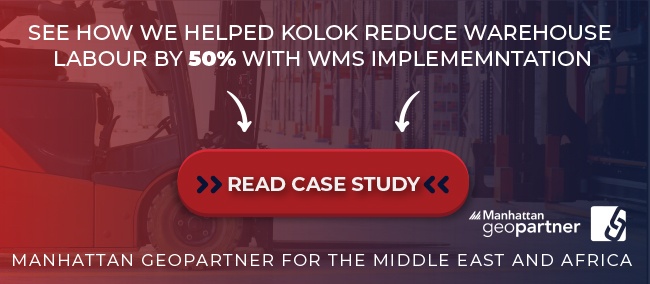What is the impact of a WMS in your supply chain?

.png?width=900&name=Untitled%20design%20(6).png)
Without a superior and tailored-to-you WMS, you may find your business suffering in multiple areas, with inefficient processes impacting your operations and supply chain, both immediately AND down the line.
To fully optimise your supply chain and succeed in meeting your customers’ expectations with regard to delivery, quality, and consistency, you need a warehouse intelligence dashboard that pulls data into set KPIs to assess the health of your business and make key decisions to help it stay on track.
A warehouse management system can help you to resolve a number of issues within your warehouse and supply chain: accuracy, visibility, productivity, and error reduction are just a few.
How do we fix these problems
How does Supply Chain Junction fix these problems, while driving an efficient process throughout the supply chain?
Monitoring your warehouse performance will assist you to compare data over time, reduce costs and ensure consistency across your supply chain, driving big changes in behaviours and processes to maximise efficiency and leading so some very real savings as well as happier staff and customers. Everyone likes it when things are easier to do!
First, we are going to take a look at how a WMS can transform the hub of your business: your warehouse.
Primary impacts of a WMS on daily warehouse operations
Real-time access to quality data gives you increased visibility throughout your supply chain
Management and sales teams get an accurate, real-time picture of various stages of shipment to track goods and replenish orders. This allows an on-the-go order management system, as well as quicker, more efficient problem-solving.
You can only fix what you can see: visibility means rapid decisions can be made correctively and preemptively to improve business and warehouse functionality.
WMS reduces warehouse labour costs due to efficient labour allocation
Managers can obtain comprehensive reports on all activities happening in the warehouse, with the accurate data an KPIs provided allowing a demand forecast to show the labour required, when, where, and for how long. Employee management is simplified, and downtime is reduced.
Labour costs are a massive save, as the workforce becomes targeted and tracked to maximise their hours, improving both business and staff satisfaction.
WMS streamlines warehouse processes
The WMS facilitates recording inventory and efficiently locating items for onward shipping or assembly. This, in turn, improves your warehouse efficiency and allows for a smoother operation from inbound to outbound operations.
Warehouse managers can also track where the goods are and respond to any arrival delays ahead of time to manage customer or business expectations.
Efficiency means you can do more with less.
WMS optimises warehouse layout
With a WMS helping you to optimise your processes, you can examine your warehouse layout and improve the ease-of-access to allow for smoother picking processes.
Less time spent looking for what you need means more time is free to pack, ship, fulfil, and make dreams come true.
WMS improves inventory and pick accuracy, with decreased time between picks
With the simplification of all operations - from inventory control, staff management and space management of goods – your inventory management improves, and your pick accuracy and timings are optimised to create a faster turnaround in the inventory department.
Faster picking times mean orders are pushed out faster, which means more orders can be fulfilled in the same time, which means increased profitability and more customers.
WMS improves warehouse flexibility and responsiveness
Automation and streamlining of processes reduce error rates when dependency on manpower lessens. This reduction in human error and administration time allows a faster, more appropriate response to sudden changes, errors, or upheavals that may occur.
Better time management saves man hours of labour costs, administrative costs, and the cost of not pushing out the next order rapidly.
WMS improves warehouse safety and security
As mentioned in our blog “Warehouse Theft Prevention Tips: How to Spot (And Stop) Light Fingers”, the less accurate your inventory records, the faster your warehouse becomes an easy target.
Knowing exactly what stock you have on hand (and where that stock is located in your warehouse) helps you identify missing stock immediately and ultimately reduces warehouse theft. However, trying to keep track of stock manually often leads to errors - especially if you’re doing infrequent stock takes.
SAVE on theft, shrinkage, and errors - keep your stock in your warehouse or in your customer's hands.
"You will not find it hard to prove that battles, campaigns, and even wars have been won or lost primarily because of logistics."
- Dwight D. Eisenhower
These impacts all contribute to an optimised warehouse which runs smoothly, has greater quality output, and delivers on KPIs consistently and efficiently.
With the warehouse running at an optimum, the impacts will be visible across your business in your sales capabilities, financial planning accuracy, and customer service.
Secondary impacts of a WMS across your supply chain
Accurate demand-forecasting
At any point in time, previous data can be recovered and used to help management make strategic decisions which drive business growth. Allow your business to forecast demand, employ the right size labour force for the forecast period, and ensure your suppliers, support teams, and client-facing staff are well-versed in the strategies to accommodate busy periods.
Save money with administration costs and avoiding poor decisions from inaccurate data.
Improved supplier relationships
By avoiding the last-minute panic that so often plagues manufacturing and production businesses, you will be able to cultivate healthy, long-lasting supplier relationships based on practical and accurate requests, and on-time delivery.
Make more money with happy customers becoming return customers.
Improved customer service levels
With your suppliers delivering on time, your warehouse working efficiently, and your forecasts up to date and as accurate as possible, you will find more time to pay attention to your customer satisfaction: reduce damage to goods, improve delivery times, and eliminate incorrect picking errors which result in customer complaints.
Less errors means less associated costs, like replacements and repeat logistics.
The ability to implement an ongoing optimisation strategy
Time is everything in a warehouse: time to examine processes, time to change up your methods, time to train employees, and time to ensure a quality product reaches your customers. Your WMS reduces time spent on inventory control, staff management and space management of goods, so that you can focus your energies on team building, training, and process optimisation.
Time is money, so more time at your disposal means you can redirect these energies.
The critical impact: The effect of a WMS on your expenditure
The essential – and most sought-after – outcome of the implementation of a Warehouse Management System is simply “REDUCE OVERHEADS”. To be able to justify your investment, you need to see the ROI.
All of the above impacts serve to reduce your expenditure, whether it be on your labour complement, storage, inventory, poor supplier relationships, or addressing customer complaints.
Typical improvements and savings that can be achieved with a successful implementation of a WMS are along the lines of:
- Labour utilisation 10-45%
- Inventory reduction 5-40%
- Warehouse utilisation 10-40%
- Picker productivity 10-50%
- Shrinkage 50-99+%
- Increase shipping accuracy to 99%
- Increase supplier conformance 99% +
- Customer service 10-50%
- Increased inventory availability 10-50%
SUCCESS STORY: how a WMS can positively impact your business
See how Kolok implemented a WMS representative of processes and practices employed by the world’s leading warehousing and distribution companies
TAGS
- WMS (51)
- Warehouse Best Practice (46)
- Implementing a WMS (29)
- Managing your warehouse (19)
- Omni Channel (18)
- eCommerce (18)
- Blog (16)
- Supply Chain Best Practice (16)
- Customer Journey (9)
- Mid-Level (8)
- Warehouse optimisation (7)
- General Tips (5)
- Industry General (5)
- Information (5)
- Trends (5)
- managing your Supply Chain (5)
- saudi arabia (5)
- Press Release (4)
- smart warehouse (4)
- 3PL (3)
- News (3)
- ERP (2)
- Entry-level (2)
- ROI (2)
- Case Study (1)
- OMS (1)
- Picking (1)
- Solution-Specific (1)
- Transport Management System (1)
Take A Look At The Results Of A Successful WMS Implementation.
See how Tarsus Distribution, in collaboration with SCJ boost overall efficiency by 60%




